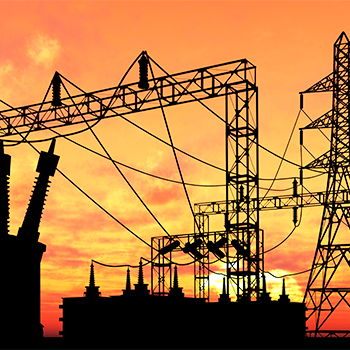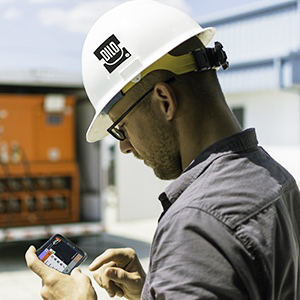SF6 gas / SF6 gas quality
Frequently Asked Questions
What is SF6?
SF6 is a synthetically produced gas. The SF6 molecule consists of one sulphur atom surrounded by six fluoride atoms.
Is SF6 harmful to health?
Pure SF6 is physiologically completely harmless. Due to its weight (5 times heavier than air) it might displace the oxygen in the air if large quantities are concentrating in deeper and non ventilated places. Legislation for chemicals does not categorise SF6 as hazardous material.
Is SF6 harmful for the environment?
It has no ecotoxic potential and does not destroy the ozone layer.
Why is SF6 used in electric power equipment?
SF6 is a very good electric insulator with excellent arc quenching properties. This is why SF6 is used in gas insulated switchgear and other electric power equipment such as bus bars. Other applications are medium and high voltage switchgear as well as gas insulated lines (GIL).
Why must SF6 be used in closed systems?
Because 1 kg of SF6 in the atmosphere contributes to the greenhouse effect to the same extent as 22,800 kg carbon dioxide (CO2). The residence time in the atmosphere is 3,200 years. For this reason emissions, must be avoided wherever possible.
Why is SF6 used in gas-insulated switchgear (GIS)?
The use of SF6 gas enables to build switchgear that are compact, require a small amount of material and guarantee high switching capacity and equipment safety.
How is used SF6 gas treated?
It can normally be reused after filtering and drying. Limit values of the IEC 60480 must be observed. Only in special cases recycling of SF6 gas is not possible and must be disposed of by thermal combustion.
Are there emissions during measuring?
Ideally not, if care is taken to ensure that gas-tight couplings are used and the gas is restored to the gas compartment after mobile intermediate storage (internal or external container).
What do I need to watch out for during gas measurement?
In order to ensure a proper measurement result in practice, attention should be paid to the following:
For measurements performed on gas cylinders with liquid SF6,
- we recommend only using a pressure regulator with metal membranes,
- do not use any rubber hoses,
- only use self-closing couplings.
What is meant by dew/frost point?
Simply put, the dew point is the temperature to which the gas must be cooled before water vapour either condenses or re-sublimates, depending on the temperature (formation of a layer of ice).
How can the dew point be determined?
Using electronic sensors (capacitive) of physically using a dew point meter.
What units is the moisture given in and are they pressure-dependent?
In dew/frost point (pressure-dependent) [°C/°F] or in ppmv or ppmw (pressure-independent).
How is the air content/CF4 determined?
Indirectly through determination of the SF6 volume (measured in percent).
What, in practice, is the usual measurement method for determining the air content/CF4?
Measurement of the velocity of sound in the gas.
When do products of decomposition occur in SF6?
Decomposition products occur as a result of discharges/flashovers occurring in the gas compartment.
What are the usual measurement methods, in practice, for the identification of decomposition products?
The usual methods are the use of electrochemical sensors or test tubes.
How is the concentration of decomposition products determined in practice?
The SO2 concentration is generally used as an indicator for the overall concentration of decomposition products (coefficient approx. 1:4), measured in ppmv.
How can decomposition products in the gas be removed?
Gaseous decomposition products can be filtered out using dry filters and decomposition products in the form of dust can be filtered out using particle filters. This occurs automatically during the recovery and filling process with a DILO service cart.




